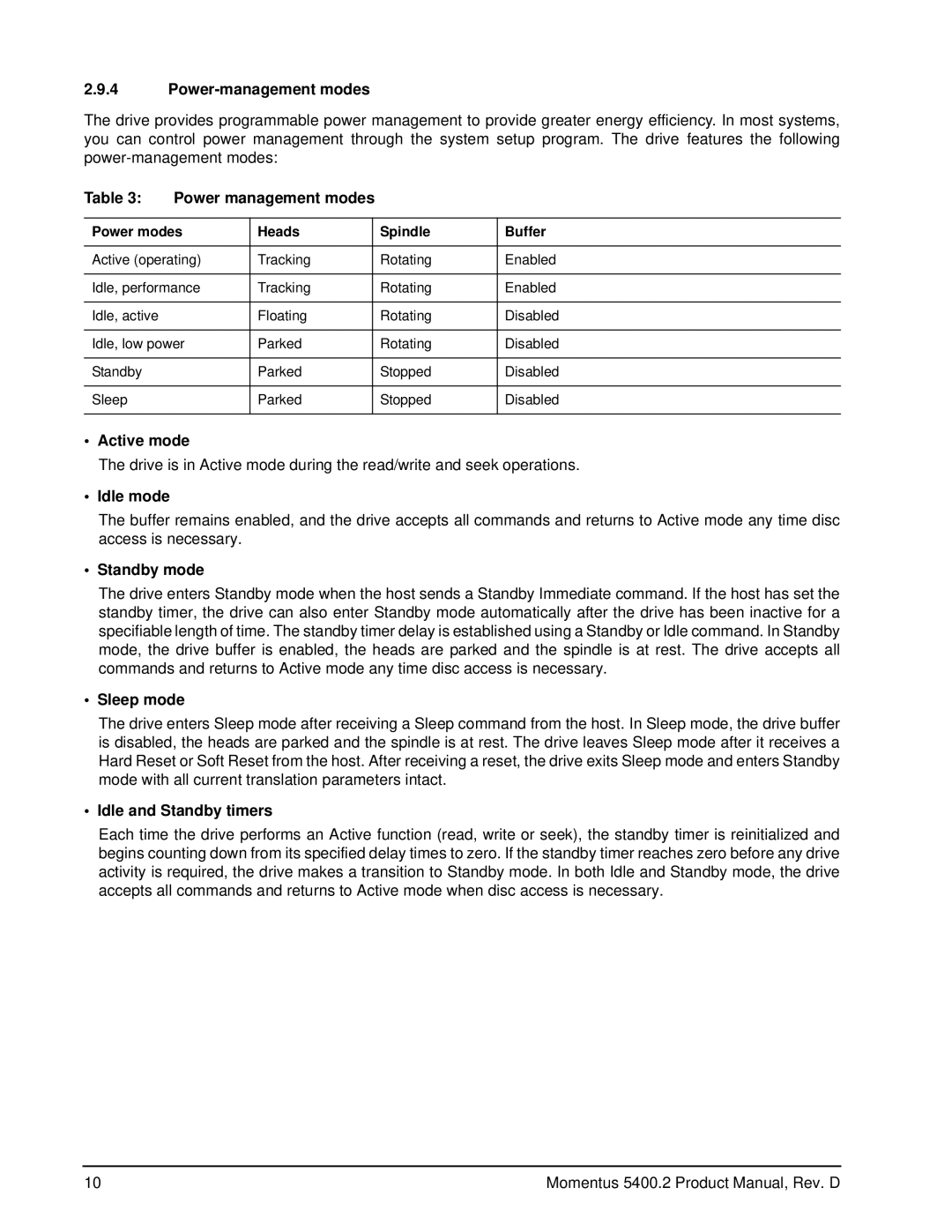ST9408114A, ST9808211A, ST9308110A, ST9100823A, ST960822A specifications
Seagate has long been a leader in the hard disk drive industry, and its array of models, such as ST960822A, ST9100823A, ST9308110A, ST9808211A, and ST9408114A, exemplifies the company's commitment to innovation, reliability, and performance. Each of these models offers unique features and specifications that cater to a variety of storage needs.The Seagate ST960822A stands out with 60GB capacity and a 5400 RPM spindle speed. It employs the Ultra ATA/100 interface, facilitating rapid data transfer rates up to 100MB/s. This model is designed for compact systems and provides ample storage for files, applications, and multimedia. Its advanced power management features also help in reducing energy consumption, making it an efficient choice for mobile and desktop computing.
Moving on to the ST9100823A, this drive offers a larger storage capacity of 100GB, also operating at 5400 RPM. It incorporates the Serial ATA interface, which enhances the drive's performance and allows for easier connection in modern computer systems. The ST9100823A is built with Seagate’s Quiet Airflow technology, ensuring quieter operations, while its rugged design promotes endurance and durability, making it suitable for both desktop and external storage uses.
The ST9308110A takes performance up a notch with a capacity of 300GB. This model leverages the SATA interface, providing faster data throughput, making it ideal for data-intensive applications including gaming and video editing. It features 8MB cache memory, which aids in quicker data retrieval and overall system responsiveness. This drive is a solid choice for users seeking high performance without sacrificing storage space.
Next, the ST9808211A expands on storage capabilities with 80GB capacity. Like the previous models, it runs at a speed of 5400 RPM, but its enhanced caching mechanisms optimize read and write operations. The drive is particularly suited for multimedia applications, where speed and storage are paramount, ensuring that users can store and retrieve large files seamlessly.
Lastly, the ST9408114A features a compact 40GB capacity, yet delivers exceptional speed with its 7200 RPM mechanism. This drive is tailored toward performance-oriented applications, such as gaming and high-performance computing scenarios. The combination of its increased RPM and fast access times make it a robust choice for users desiring responsiveness in their systems.
Collectively, these Seagate models embody a range of technologies and characteristics, from the ATA interface to advanced power management, making them suitable for a variety of applications. Whether one needs high capacity, enhanced performance, or reliability, Seagate continues to offer drives that meet diverse storage requirements in an increasingly data-driven world.
